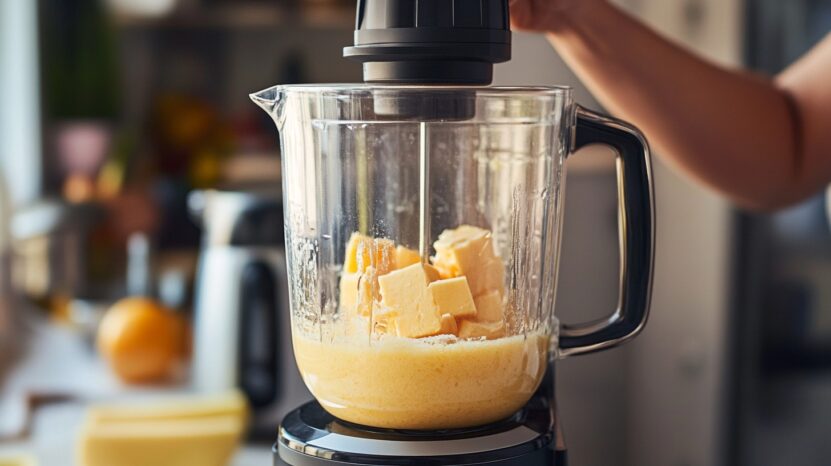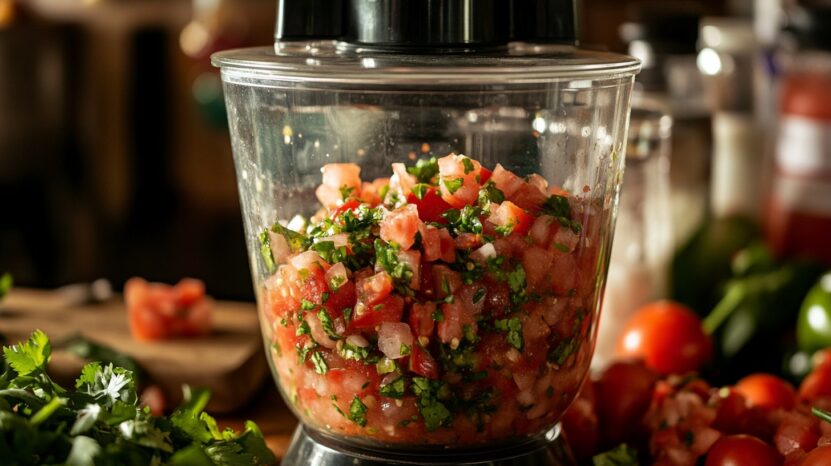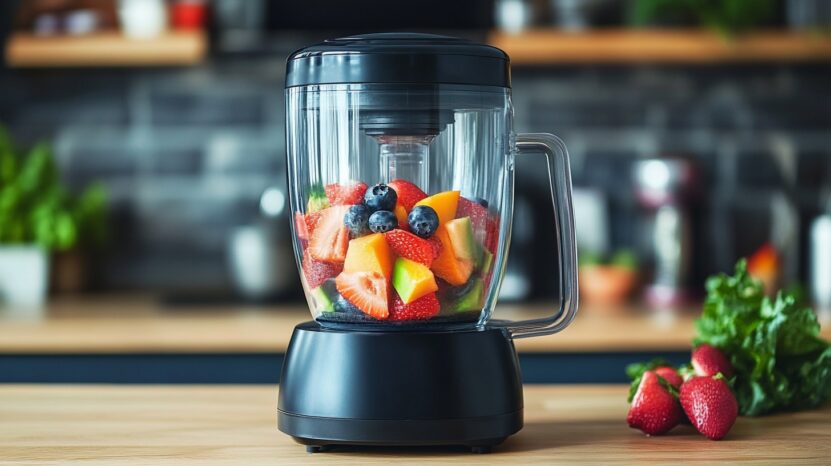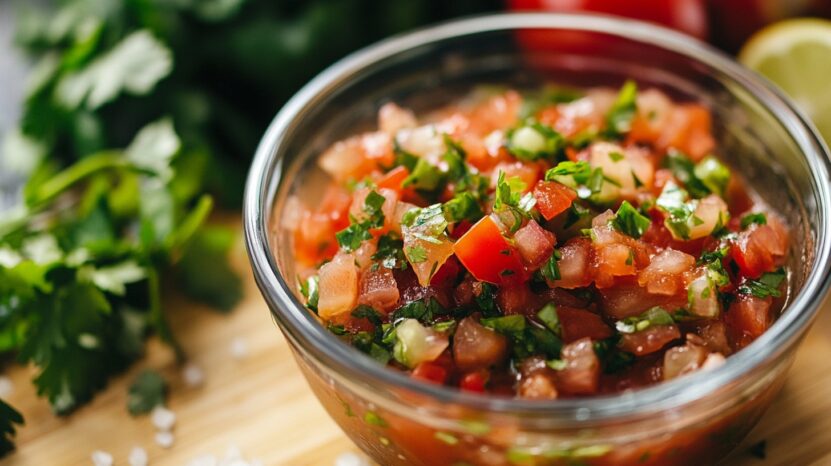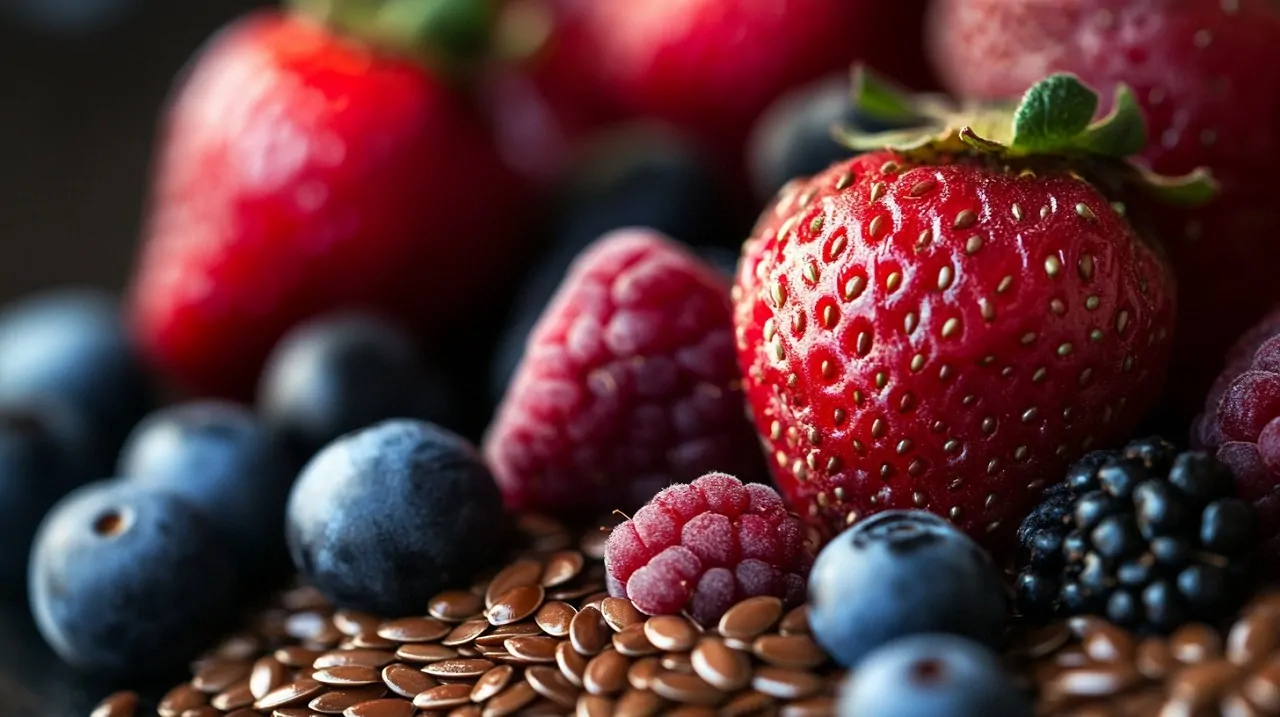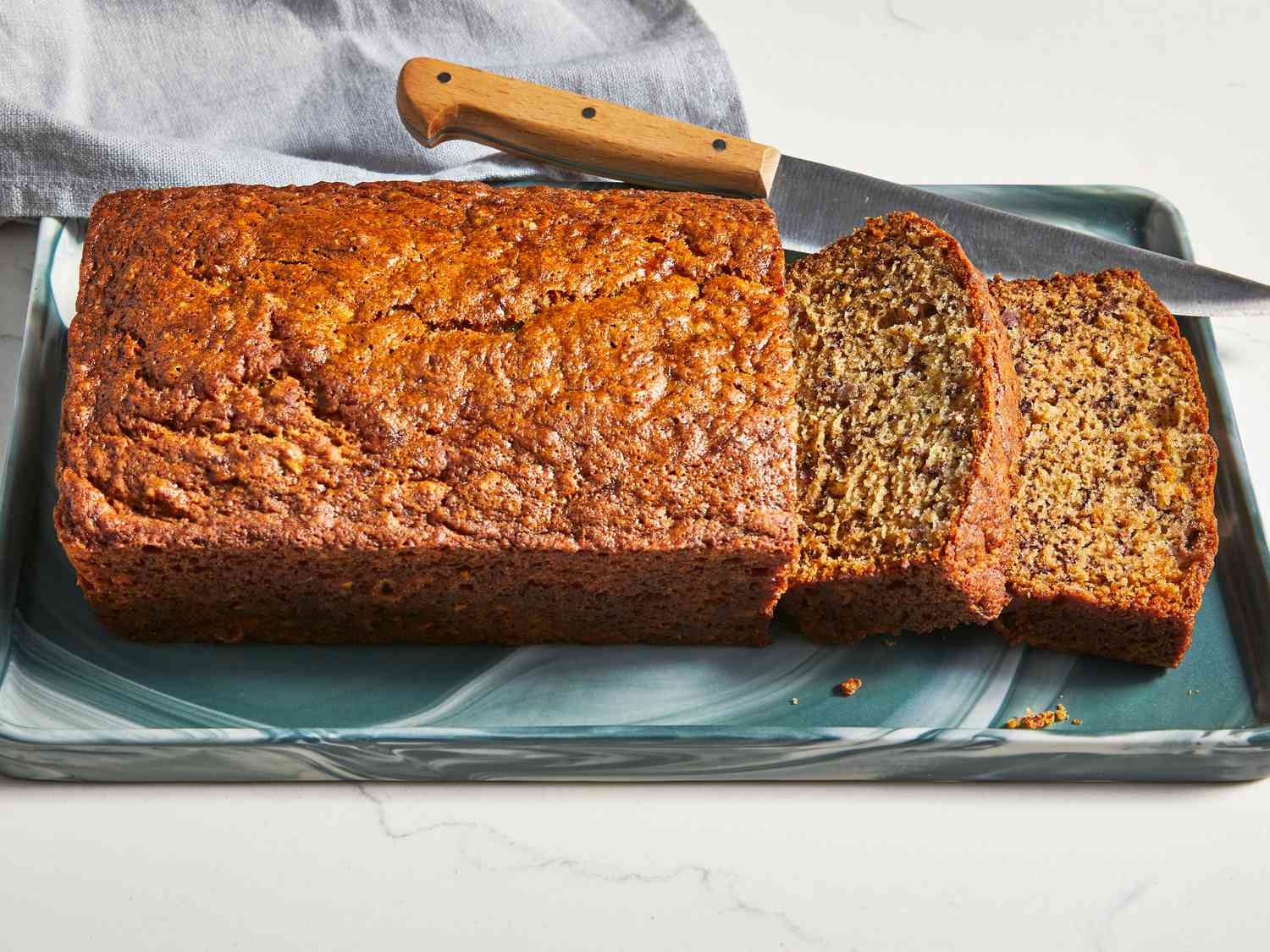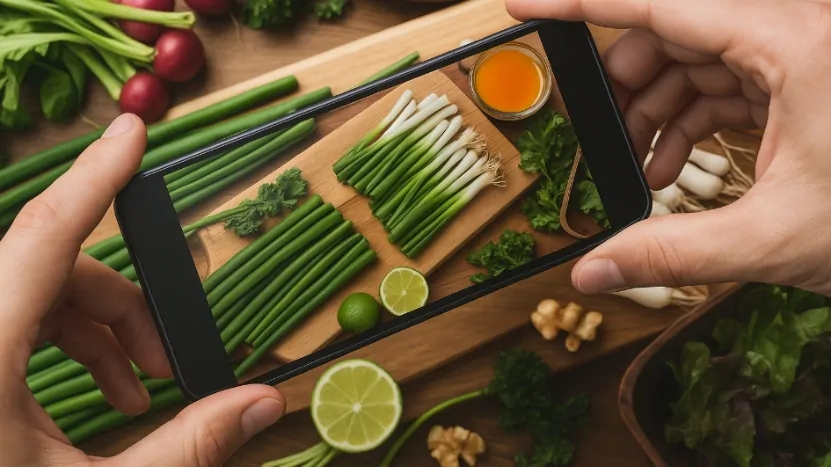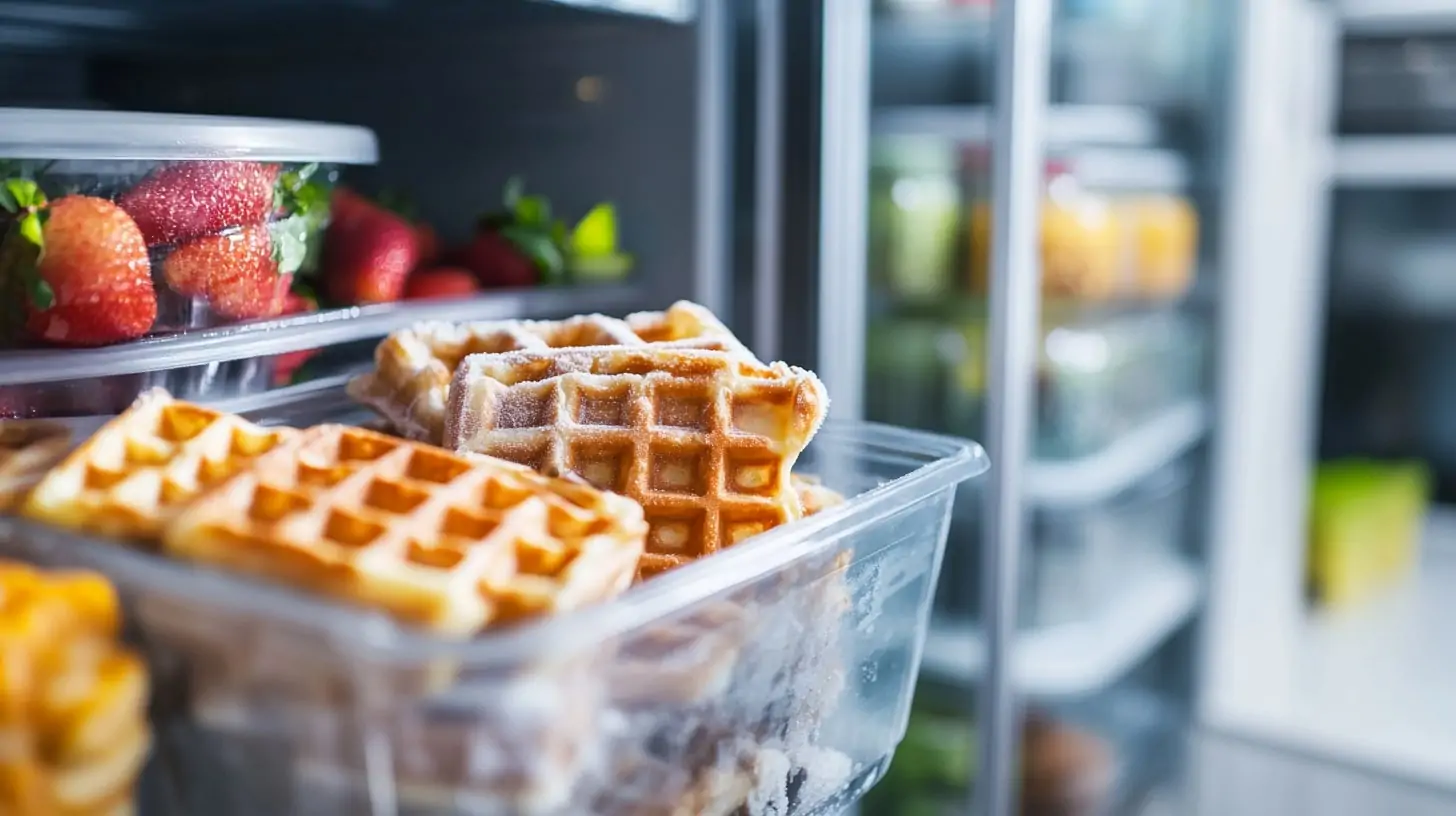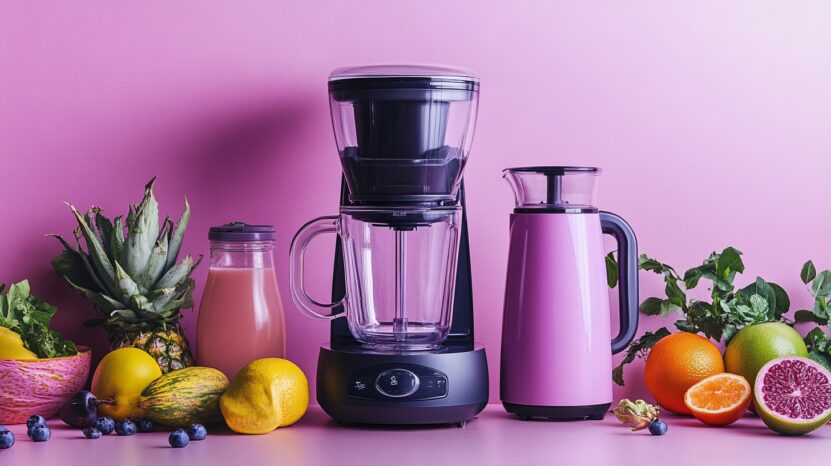
Share Post:
Blenders and food processors are essential kitchen tools, each designed for specific culinary tasks.
Blenders are primarily used for tasks like blending, pureeing, and crushing, while food processors shine when it comes to:
- Chopping
- Slicing
- Shredding
But can a blender serve the same functions as a food processor, offering a more convenient and space-saving option?
We’ll explore the key similarities and differences between these appliances and whether it’s practical to use a blender in place of a food processor.
The Overlapping Culinary Powers
Blenders and food processors share several common features and functions. Both appliances are equipped with powerful motors that rotate sharp blades to process ingredients.
- Grinding nuts
- Pureeing vegetables and fruits
- Mixing various ingredients
Both often come with different speed settings and pulse options, allowing control over the texture and consistency of the processed food.
Appliance Showdown
Blenders and food processors are two of the most commonly used kitchen appliances, and while they share some overlapping functions, they are distinctly designed for different purposes.
Knowing the key differences between these two appliances can help you decide which one is better suited for your cooking needs.
Blender Design and Functionality
Blenders are typically characterized by their narrow, tall containers.
- Smoothies
- Soups
- Sauces
The high sides and the blade placement at the bottom create a vortex effect when the blender is in use.
This vortex pulls ingredients down toward the blades, ensuring a thorough blending of soft ingredients and liquids.
Many modern blenders also come with variable speed settings, which can give you more control over the blending process.
They are generally not as versatile when it comes to dealing with solid ingredients.
While they can handle chopping or crushing to some degree, they may struggle with tasks like kneading dough or evenly slicing vegetables.
Food Processor Design and Functionality
Food processors are designed for versatility and precision when handling solid ingredients. Their bowls are wider and shallower than a blender’s container, which allows for better distribution of ingredients when chopping, slicing, or shredding.
Food processors also come equipped with interchangeable blades and attachments, such as slicing and shredding discs, as well as a dough blade.
These attachments expand the processor’s capabilities, making it a multi-functional tool in the kitchen.
Food processors are the go-to appliance for tasks like chopping vegetables, grating cheese, or mixing dough, where precision and evenness are important.
Unlike blenders, they are not designed for handling liquids as efficiently, though they can still manage tasks like making pesto or certain sauces.
However, their shallow design and lack of a vortex effect make them less suitable for creating the ultra-smooth textures that blenders can achieve.
Which Appliance Should You Choose?
Ultimately, the decision between a blender and a food processor depends on the type of cooking you do most often. If you primarily make smoothies, soups, or anything that requires smooth, liquid-based textures, a blender is likely the better choice.
On the other hand, if you frequently chop vegetables, shred cheese, or knead dough, a food processor will offer you the versatility and precision you need for these tasks. For those who cook a wide variety of dishes, having both appliances might be the ideal solution, as each one shines in different areas.
Blenders as Makeshift Food Processors
While blenders and food processors are designed with distinct purposes in mind, blenders can often step in as makeshift food processors for a variety of tasks.
Though they may not deliver the same level of precision or versatility as a dedicated food processor, a blender can still handle many food processing duties with relative ease, making it a convenient option in kitchens where space is limited or a food processor is unavailable.
| Task | Blender Strengths | Blender Limitations |
|---|---|---|
| Pureeing for Smooth Consistency | Creates smooth textures for soups, sauces, baby food. | – |
| Grinding and Chopping | Grinds nuts, seeds, spices; chops garlic and onions. | Less fine and uniform than a food processor. |
| Crushing and Pulverizing | Makes breadcrumbs, crushes cookies, processes ice. | Requires more effort for even textures. |
| Working with Smaller Quantities | Efficient for small portions like hummus or salsa. | Needs stopping and stirring for even processing. |
| Limitations to Keep in Mind | Handles liquids and smooth blends well. | Struggles with precise slicing, grating, kneading. |
Techniques for Using a Blender as a Food Processor
If you don’t have access to a food processor, a blender can often be used to complete similar tasks with the right techniques. Although blenders are designed primarily for liquids, following a few key strategies can enhance their performance when processing solid foods.
Here’s how you can optimize your blender for food processing tasks:
| Technique | Description |
|---|---|
| Work with Small Batches | Processing food in small batches ensures better circulation of ingredients, leading to more consistent chopping or blending. |
| Add Liquid for Smoother Blends | Adding a small amount of liquid, such as water, broth, or oil, helps solid ingredients move around more easily. |
| Use the Pulse Function | Pulsing allows greater control over texture by processing in short bursts, preventing over-blending. |
| Adjust Speed and Duration | Using lower speeds for coarser textures and higher speeds for smoother blends helps achieve the desired consistency. |
| Stir and Scrape Down the Sides | Pausing to scrape down the sides of the blender jar ensures even blending by preventing ingredients from sticking to the sides. |
| Cut Ingredients into Smaller Pieces | Pre-cutting ingredients into smaller, uniform pieces helps the blender process them more evenly. |
| Use Ice or Frozen Ingredients for Grinding | Using ice or frozen ingredients provides resistance for the blades, leading to a finer grind when processing nuts, spices, or even coffee beans. |
Popular Recipes that Can Be Prepared Using a Blender as a Food Processor
Blenders can be surprisingly versatile and are capable of preparing many dishes that are traditionally made with a food processor. While the results may vary slightly, you can still achieve delicious, well-blended meals and snacks with the right techniques.
- Salsa
- Blend tomatoes, onions, peppers, garlic, cilantro, and lime juice.
- Pulse for chunky salsa, blend for smooth.
- Optional: add mango or pineapple for a sweet twist.
- Homemade Sauces
- Marinara: Blend tomatoes, garlic, onions, and herbs.
- Pesto: Blend basil, garlic, pine nuts, Parmesan, olive oil.
- Alfredo: Blend butter, cream, and Parmesan for a silky texture.
- Hummus
- Blend cooked chickpeas, tahini, garlic, lemon juice, olive oil, and spices.
- Add water or oil for desired consistency. Experiment with roasted red peppers or sun-dried tomatoes.
- Nut Butters
- Blend roasted nuts (peanuts, almonds, cashews) on high, scraping sides.
- Add honey, cinnamon, or cocoa for flavor. Blend until creamy.
- Smoothies & Smoothie Bowls
- Blend frozen fruits (bananas, berries, mangoes) with a little liquid.
- Create thick, creamy texture for bowls and top with granola or seeds.
- Pancake or Waffle Batter
- Blend flour, eggs, milk, and oil/butter until smooth.
- Add cinnamon, vanilla, or mashed bananas for extra flavor.
Pros and Cons of Using a Blender as a Food Processor
Using a blender as a food processor has its advantages and limitations. Let’s consider both sides:
| Pros | Cons |
|---|---|
| Cost-effective: Blenders are generally cheaper than food processors, making them a budget-friendly choice for basic food processing. | Limited functionality: Blenders struggle with tasks like slicing, shredding, or precise chopping due to design limitations. |
| Space-saving: Using a blender instead of a separate food processor saves counter and storage space. | Inconsistent results: Achieving uniform textures and consistency is difficult, especially when processing small amounts. |
| Versatility: Blenders can handle various food processing tasks, making them useful for diverse recipes. | Safety concerns: Blenders may lack safety features for solid food tasks, increasing the risk of accidents. |
The Bottom Line
Blenders can serve as a substitute for food processors in some tasks, but they aren’t a full replacement.
Blenders are excellent for blending, pureeing, and crushing, making them perfect for dishes like sauces, smoothies, and salsas.
However, they fall short when it comes to tasks like slicing, shredding, and achieving uniform results. These limitations should be kept in mind when using a blender for food processing.
Related Posts:


